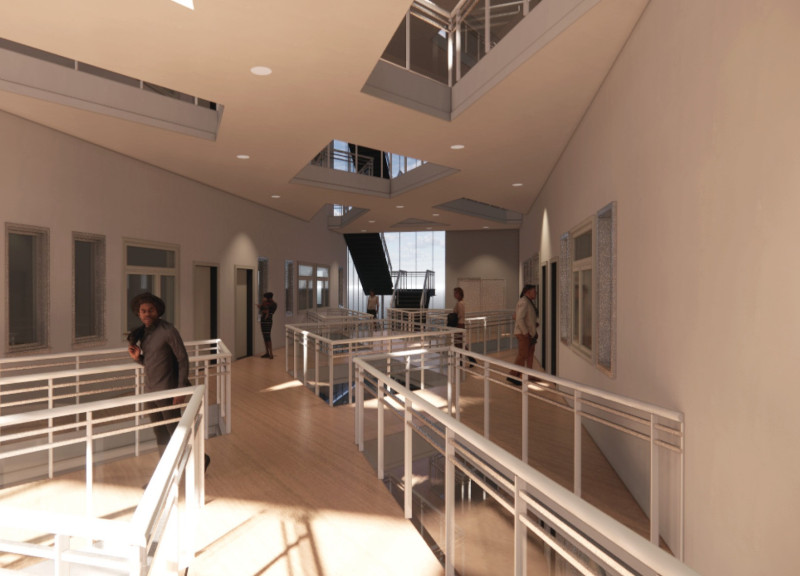5 key facts about this project
Triptych Housing responds to the urgent need for affordable multi-family housing in San Francisco, a city facing rising living costs and the displacement of families. The project combines elements of traditional design, such as gable roofs, with modern features that prioritize community connection. Glass plenums link the residential units, promoting interaction while allowing for individual privacy. This thoughtful approach aims to create a supportive living environment for families.
Functional Design
The layout of Triptych Housing is centered on encouraging community interaction among residents. Open connections between living spaces and shared areas, including a rooftop garden and play zones, invite families outdoors. This design fosters a vibrant community atmosphere and enhances overall well-being for individuals living in the complex. It is a design that considers the importance of social ties in urban living.
Unit Configuration
The variety of unit sizes in Triptych Housing accommodates different family structures and needs. It includes no-bedroom, one-bedroom, two-bedroom, and three- to four-bedroom units. This diversity ensures that the development remains accessible to a wide range of households in San Francisco, reflecting the various living situations present in the city. By offering different options, the design supports inclusivity and versatility.
Architectural Features
The building’s form and elevations create a contemporary addition to the urban landscape. Thoughtful section views reveal the arrangement of communal and private spaces, while the use of glass throughout maximizes natural light for each unit. Careful planning of movement pathways enhances the livability of the complex, reducing obstacles and encouraging connection among residents.
Each design element in Triptych Housing works cohesively, where the glass plenums serve as a central feature. They bring people together in a shared space while still allowing them to retreat to their individual homes, embodying a balance between community and privacy.























































